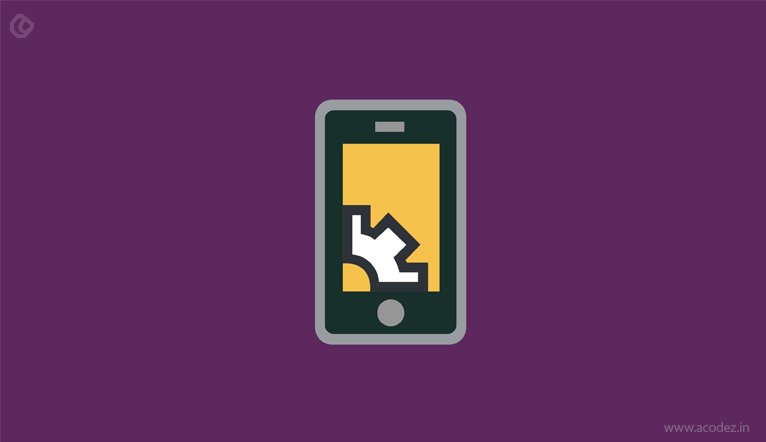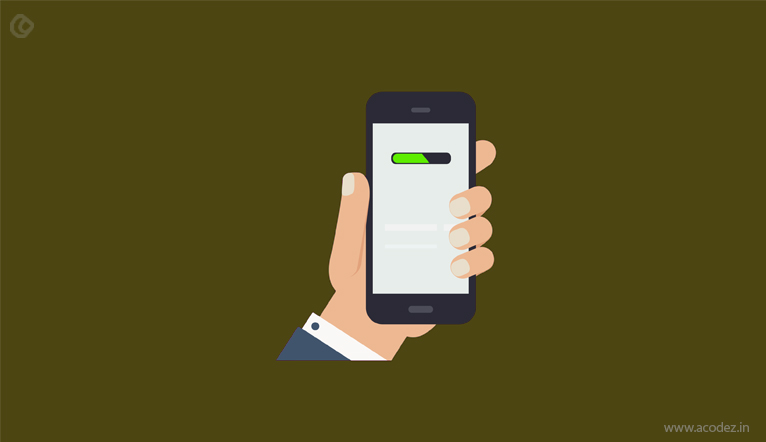The number of mobile devices have increased by huge numbers ever since its inception and is expected to reach 5.5 Billion by 2020. The technology of mobile devices is also increasing day by day. In order to make the most out of your mobile phones, the apps have become quite popular. The number of apps nowadays has increased rapidly. This has increased the competition in the mobile app market. There has been an increase in both the consumer apps and enterprise applications as well. The enterprise application can also help you to gain a wide recognition amongst your users. The top apps are dominated by multinational companies like Google, Facebook, WhatsApp, Instagram, SnapChat, etc.
In order to make sure that your apps are widely used and loved by your users, it is necessary that you provide a better user experience to your users. In order to do so, it is necessary that you do a proper mobile testing so that your app function the way that they intend to do and is free from error. A well developed, and thoroughly tested app make your apps reliable, trustworthy, and easy to use. This can help you to retain your market share as this can help you to ensure that the quality of your product is above par with your competitors. The bugs in the apps may result in monetary losses, legal issue, and brand image damage. In order to facilitate the mobile application testing, there are certain test strategies that can help you to test the mobile applications and make it better and easier to use. It also helps you to test how several factors can impact your application. In order to make sure that you have a better mobile app, here are some amazing mobile testing strategies that can help you to test your app and make sure that the apps are reliable, trustworthy, and is easy to use.
Firstly what you need to identify is your requirements. This can be done by creating a flowchart for the app. This can help you to decide if you need the native apps or the hybrid apps. You also need to identify what devices do you need your users to use your app. Testing applications on mobile devices are more challenging than testing the web apps on the desktop. It is because the mobile devices have different screen sizes and hardware configurations wide varieties of mobile devices, different mobile operating systems, different versions of the operating system, different mobile network operators, frequent updates etc. Another big challenge of the mobile application testing is that the mobile screen is smaller and have less than that of the desktop.
The mobile application testing can be categorised as:
- Cross Platform Testing
- Functional Testing
- User Interface Testing
- Localization testing
- Accessibility Testing
- External Factors Testing
- Performance Testing
- Security Testing
In order to perform a proper app testing, the steps mentioned below can help you to do so.
Know Your Customers:

Knowing your customers and your user’s expectations are the first and foremost aspect of your business. It is because different mobile users have different expectations from their mobile devices and are relatively larger than their desktops. Hence it is necessary that you have a proper idea of your target customers, their expectations, age, gender, monthly income, mobile usage habits, geographical location, and other such information to get a better picture of your customers. This can help you to understand your customer’s usage patterns and help you to do a proper mobile app development and mobile app testing appropriately in your business. It also helps in facilitating the testing and helps you to focus on the devices that you need to target and also downsize your testing efforts as you only need to test the devices that your customers use. This can be done with the help of interviews, conduct market research, and make use of mobile app stores statistics.
Create Different Device Groups:
One of the ways in which you can choose to test the apps in different scenarios. This can be done based on the knowledge of the customers and the types of mobile they use. Here different groups of devices can be created and can be specified with a different priority. Different mobile devices can be added to this target group that can help you to decide which features need to be implemented on which device groups and what needs to be exempt from it. Hence during testing, the app tester need to focus on testing on the established group devices and can help speed up the process.
Follow Standard Test Methods:
It is necessary that the software testers are familiar with software testing terms and techniques. These include the elements such as boundary values, equivalence classes, various coverage types, acceptance, etc. Apart from these, the functional and nonfunctional testing skills of web or desktop applications are required. For mobile testing, you also need to implement some modifications.
Test For Major Hardware Features:

Different mobile devices are filled with different hardware that helps the users to interact with users and their surroundings with the help of the mobile device. Along with the basic hardware, the smartphones also come fitted with various sensors that can help you to make the most out of your smartphone devices. Some of these sensors are:
- Ambient light sensors
- Humidity sensors
- Proximity sensors
- Acceleration sensors
- Gyroscope sensors
- Magnetic sensors
- Pressure sensors
- Location sensors
- Touchless sensors
- Temperature sensors
Apart from these, many new sensors are added on a regular basis. These sensors can be used within the mobile app and hence it is necessary that you test your app for different sensors and make sure that the app works in the way in which it is intended to do. This can be done by testing the app in sensor-specific scenarios. It also needs to be tested in different environments and light situations. Apart from testing the sensors, it is also necessary that you test the mobile app against different hardware features of the device like the camera, display, storage, microphone, etc.
Test On Different Data Networks:

Various apps make use of data networks to access your internet. Mobile apps that require you to have an Internet connection to carry out your task. Hence, it is necessary that you test it in various data networks i.e. Fast data networks like LTE, 3G, or Wi-Fi and also in the slower networks like EDGE or even GPRS. It can also help you to test various types of data networks and also test how your mobile apps perform. Hence it is necessary that you test that the mobile app works with different network speeds and handle network transitions from LTE to EDGE with ease. To order to test these scenarios, it is necessary that you try it in different network scenarios and network carriers.
Test In Different Languages:
If your mobile apps are to be used in different countries, it is necessary that you support your app in different languages. Hence it is necessary that you test the app in different languages, characters, and sizes. It is necessary that your app is consistent in different language, is clear, and is able to convey your information quite easily. It is also necessary that you choose a proper font for each language you use that is consistent with the app.
Test Standby, Interrupt, And Battery Issues:
In order to make sure that your mobile device offers the best performance, you need to conduct certain tests. The standby test states that the mobile app can handle the standby mode. You also need to test for any UI glitches, data handling, and other errors to make sure that the app maintains their state while entering and leaving standby mode. It is important that you test that the mobile app updates the last used view at the end of standby mode. It is necessary that the app must update the current view to get the latest data from the back-end.
You also need to conduct the interrupt test. Here you need to select several mobile devices that have multiple apps installed and create notifications on your device. This can enhance the performance of your app and get better responses from the users. Here you can also look for app crashes, freezes, UI glitches and also choose the option to check for the performance of the apps.
Testing the battery consumption of the app is necessary as it helps to get an idea what amount of battery is consumed. Huge battery consumption can result in the uninstalling of the app. It is necessary that during the start of testing the battery is fully charged and note the battery of the state to get an idea of the battery drain. It is also necessary that you test the mobile app with a battery charge of 10–15%, as a majority of these devices enter the battery-saving mode and disables some hardware features of the device. This helps you to find bugs in the case of turned-off hardware.
Test Install, Uninstall And Updates Procedures:

The install, uninstall and updates are the important aspects of the life of the app. It is necessary that you test the app updates and installation process. It is necessary that in the update process you simulate the updating of the app from the older version to the latest one. In such a case it is necessary that the user’s database changes do not impact the user’s database updates. It is also necessary that during install and uninstall tests you look for crashes or any other problems. After the uninstallation process, it is also necessary that you check the device storage to ensure that the complete removal of app data has taken place.
Restrict Permissions And Check Log Files:
It is necessary that you choose the option of best practices for mobile app testing with appropriate app permissions and log files. You need to also verify that you provide the app with only those permissions that it require. Apart from that, the log files must be checked thoroughly to look for errors, stack traces, warnings, etc. It is also necessary that the log files must be set to the release mode as it helps to avoid showing too much information to others.
Summary:
These are some of the few ways in which the users can test the mobile application and make sure that the mobile applications are free from the errors and work the way it intend to do. It is also necessary that you remain updated with the latest trends and implement these in your app.
Acodez is one of the best mobile app development company in India that specializes in developing state of the art apps. The apps are designed keeping in mind the latest trends to make sure that the users are provided with best user experience.
Looking for a good team
for your next project?
Contact us and we'll give you a preliminary free consultation
on the web & mobile strategy that'd suit your needs best.










